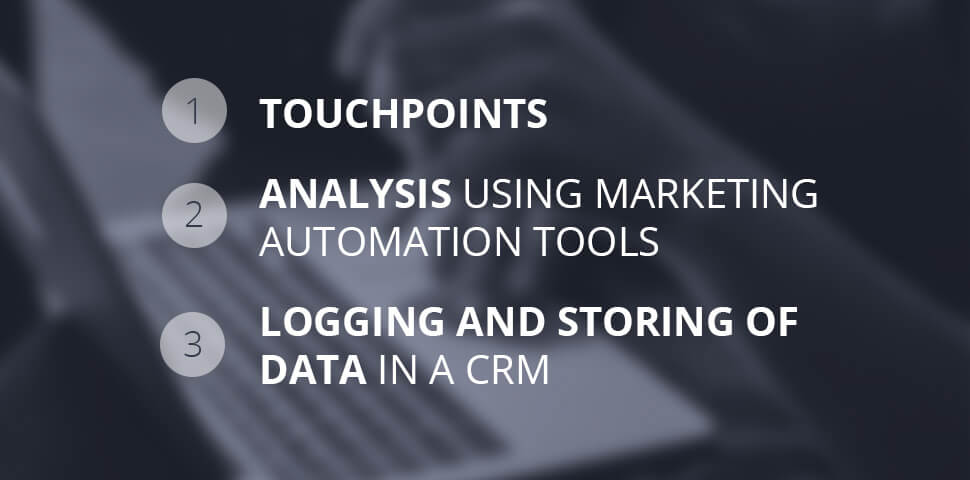In 2020, the hard truth is that there isn't a sector in the digital marketing space that is completely untapped – everyone is online. So how do you use digital marketing to get leads, never mind grow sales?
A successful business knows that they have to be both visible and relevant online – and they now have to go to where their customer is. To grow sales means to think outside the box while finding the gaps. But with a global pandemic (and an economy that’s in the toilet) how the hell do you find those gaps?
“The days are gone when you could just build a site and people would find you. The trick is to look at the data, otherwise you’ll miss opportunities,” says Mark Stecker, Firewater’s FIRECHIEF.
Looking at the data involves behaviour-led marketing, which analyses what your potential customers’ do when they browse the web. That data is then leveraged for a whole bunch of different outcomes, like:
- Displaying highly relevant online ads
- Lead-generation
- Targeting personalised marketing messaging
Say you publish a blog post, create an online advertising campaign, make a website go live, or host a webinar... are you looking at who's consuming what your business is putting out there?
If you’re not using behaviour-based tools to track user activity you’re losing out, big time. Someone who has read your newsletter, clicked on an article link, visited your website, or attended your webinar is a hot lead. But – and we can’t bang on about this enough – they’re also a missed opportunity if you’re not looking at the data.
In a nutshell, behavioural-led marketing involves three steps:

>> You start with a touchpoint of online engagement – the little, digital hooks that get your potential customer’s attention: mailers, blog posts, website landing pages, chatbots…
>> Once your potential customer has engaged with the touchpoint (they’ve read a blog post, clicked on a link in your mailer, attended your webinar, asked the chatbot a question), this engagement needs to be analysed via marketing automation tools, which pump out data in the form of a report…
>> A Customer Relationship Management (CRM) system then logs and stores the data of the people who have shown intent (more about this if you read on) – these are your sales leads, which can be continually tracked along the sales journey by anyone on your sales team, until that sale is closed.
Find the gaps to compete with the giants
Say you’re in financial services. You’ve got a medium-sized tax auditing company based in Sandton, and you have a reasonable budget for ad spend on social media, as well as creating content for your website. The fact is, no matter how amazing your content is, you won’t realistically be able to compete with the likes of FNB or Outsurance.
“If you have the biggest budget you might win the online visibility bidding war. But if you don’t, you need to find the gaps,” says Mark.
If you don’t find the gaps, you’ll just end up doing what all your tax auditor competitors are doing: targeting 35-45 year olds in Johannesburg who have a high LSM. Guess what – everyone else is targeting them too, which drives up the price of cost-per-click/cost-per acquisition, and makes it way more expensive to be in those spaces.
“If you sell a luxury brand your potential customers probably have been to a particular restaurant, or they shop in a certain district,” explains Mark. “So you look at those conditions, separate your audience into a specific segment, and target that.”
This is behaviour-led marketing and it's a lot more specific, and cost-effective. If you target behaviours – where your potential customers shop and what they eat – you win because you're not trying to be heard amongst all the noise.
“You now go to your customer, not the other way round, this is very helpful, especially in markets where the client is smaller and they can't compete against the giants.”

‘People like us do things like this’
That’s a chapter in marketing guru Seth Godin’s latest book, This is Marketing, entitled “People like us do things like this.” According to Seth, marketers and businesses alike have to define their “us” – their target customers. For example, “people like us listen to music like this”, or “people like us donate to a charity like this”.
This definition goes beyond demographics, and is more closely related to psychographics. We don’t want to get too technical on you, but marketing has been moving away from broad-strokes demographics (e.g. gender, income, age, educational level) to more targeted psychographics (e.g. values, lifestyle, opinions and interests of people of a certain community). As this article points out, demographics are focused on who you are at a basic level, while psychographics explain how you feel about things.
Seth’s idea of “people like us do things like this” is taking it a bit further by comparing groups of people with similar psychographics to a tribe. To effectively target a potential customer, you need to really understand their T R I B E – how they think, how they feel, and how they behave.
Successful businesses are doing just this to close and grow sales – they are targeting tribes and behaviour, not LSMs and age groups.
Behaviour-led marketing is about intent
Back to marketing automation and CRM: these tools are quite difficult to use, but agencies like us utilise them to help keep track of things like your business’s activity with a particular client, or to track a client’s behaviours.
“What often happens is that you spend a whole lot of money acquiring a potential customer, but that’s where it stops. The rep doesn't phone back, someone deletes an email by accident – it's lost in the noise and it's a lost opportunity,” says Mark.
However, CRM and marketing automation allows you to track behaviours and consolidates that information. Based on that, these tools can automatically trigger an action, like sending an email to someone who has recently read your blog post. It could say something like: “Hey Mark, we've noticed you enjoy our content and we'd love to set up a one-on-one meeting to chat more”; or maybe they visited your online store but they didn't convert: “Hi Mark, we see that you left your cart abandoned; here's a voucher.”
Another aspect that many people don’t consider is the potential customers who aren’t doing anything per se – they’re not ready to buy right now, but they could be in the future.
“If you think about email marketing, the average email open rate in 25% if you're lucky. That means 75% of that base is just completely ignored,” says Mark.
“What happens is that you keep sending out mails to the same 25%, maybe that shifts by 5% or 10%, but ultimately you keep sending the same stuff and eventually they unsubscribe. What happens if those users in that 75% are actually visiting your website and consuming content, but they're just keeping quiet? They’re not buyers right now but you're top of mind, so when they are ready they're going to think you're the market leaders and come to you.”

There’s no silver bullet – you need to reach your customers in different ways
“Anyone who claims that a digital marketing silver bullet exists is a liar,” says Mark. “And if something is a quick-fix it’ll be short-lived: everyone will start doing it and it'll become more expensive, and your business will become less effective.”
According to Mark, in a COVID world all businesses have to quickly think of different ways to reach potential customers – beyond in-store activations and golf days. Fortunately, the digital marketing experts (like Firewater) have the tools. Some of these tools, like content marketing are part of a long-game that won’t translate to sales immediately (read this article to see why).
“But, putting out great content, in combination with email marketing, a mobile-first website, hosting online events, SEO, and targeted online advertising will all put your company front and centre.”
The bottom line is that if you utilise a behaviour-led mindset – you’re looking at who's consuming what you're putting out – you can separate the general BS from customers who are actually interested. And that’ll grow your sales.
Not everyone is going to actively come to you. But with behaviour-led insights and tools you won’t need to spray and pray – you’ll boost sales instead.
Sales growth feel impossible right now? Tracking customers’ behaviours seem like too much admin? Contact Firewater; we can help tie it all together and guide you (and what we do, we do well).




